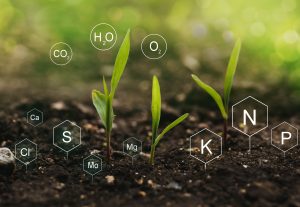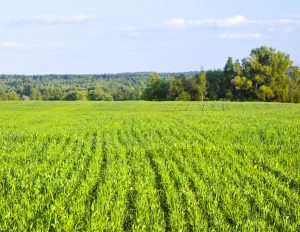The environmental benefits of conservation agriculture
Water

The quality of water and the capacity of the soil to retain water are improved thanks to the adoption of conservation agriculture practices. A direct result is an estimated reduction of water requirement by 30-40%. As soil is no longer disturbed by mechanical operations, its structure and compactness are preserved and with them the capacity of the soil to absorb water.
In other words, the absence of mechanical activity on the soil significantly reduces soil erosion and water runoff, together with leakage of chemical substances carried by the water. The latter is an undesirable phenomenon the European Commission always looks at avoiding and plans to fight even more firmly with the 2021 “Zero-Pollution Action Plan for air, water and soil”, part of the European Green Deal.
Carbon emissions

The reduction of tillage practices on areas cultivated with conservation agriculture makes it possible to transform the soil from a carbon emitter (when moved mechanically) to a carbon sink (when not moved it has a high carbon retention capacity), meaning carbon is sequestered into the soil In other words no-tillage contributes to the reduction of the carbon footprint and therefore helps battle climate change.
Improved nutrient management

Avoiding soil disturbance translates into an increase of soil capacity to retain nutrients. Coupled with a targeted application of glyphosate that has the capacity to kill invasive weeds that compete with crops for those nutrients, farmers can reduce the quantities of fertilizers used to nourish their plants. The European Commission communicated its ambition to reduce fertilizers use by 20% by 2030 in its Farm to Fork Strategy and Biodiversity Strategy and conservation agriculture could help achieve this goal.
Cover crops

One of the key principles of conservation agriculture is crop rotation, meaning the practice of alternating crops that are planted on a specific field either annually or multi-annually. This practice comes with the inclusion of cover crops, which are crops planted primarily for the benefit of the soil. Cover crops help suppress weeds, build and improve soil fertility and promote biodiversity. Since cover crops are usually planted off-season to prepare fields for the growing-season, they also help prevent soil erosion.
Another advantage of cover crops is the suppression of weeds by preventing sunlight from reaching weed seeds and maintaining a lower soil temperature than in bare soils. As a consequence, weed seed germination is impeded or reduced. The targeted application of glyphosate at or near the soil surface, especially before sowing or before the planted crop emerges, enables an effective control of the weed seeds and prevents weed infestation.
Furthermore, cover crops enable the retention of sediments and farming inputs like fertilisers & plant protection products, therefore minimizing their leakage into water bodies.
References
- “Socio-economic value of glyphosate: A review of EU studies assessing the value of glyphosate to the agriculture industry”; L. Garcia-Perez, Harriet Illman, S. Wynn; 13 May 2020